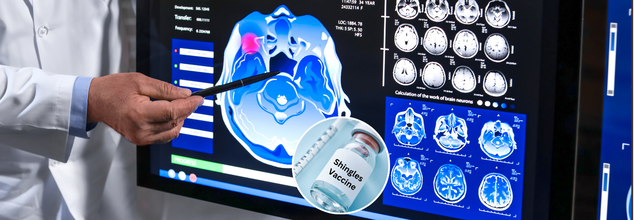
Credits: Instagram & Canva
American Woman Who Compared US Healthcare System With India Says Affordability Is An Issue In America
Kristen Fischer, an American woman living in India who works in web development sparked a new debate. This is between the healthcare systems of two big countries, the United States and India. The woman took to her Instagram @kristenfischer3 with 143K followers and shared a video titled 'Healthcare in India and the USA'. The video garnered over 51.6K views and with many more interactions.
Her video starts with comparing the wait time of a GP. In the US, the average wait time, she mentions is 2 to 4 weeks, whereas in India, it is a walk-in or same-day appointment. She mentions in the caption that in India, healthcare is more accessible and there is an easy to access doctors, medicines, and quality care. She also talks about how easily medicines are accessible in India and over-the-counter medicines could be picked without a prescription.
What Really Are The Big Differences In Healthcare Between The Two Countries?
Wait Time
One of the biggest differences that Kristen highlights is of the wait time for medical consultation. In the US, scheduling an appointment with a GP can lead to even a month of wait time. It can further extend to three months. For elective surgeries or planned and non-emergency surgeries, the wait time could be for as long as six months.
Whereas, if one looks at India, the access is faster. There are appointments, which can be booked within a few days, furthermore, walk-in services are also available in most cases. Elective surgeries are usually performed within one to four weeks in India.
Cost Of Medical Consultation
Healthcare in the US is costly. Kristen writes in her caption: "In America, we hardly went to the doctor because it was just so expensive and you had to wait weeks to get in. But I have peace of mind in India knowing that I can go to a doctor any day even for something small because it is affordable.”
It is true, on an average, for a visit to a doctor in America could cost anyone between $150 to $600, which is around 12k to 50k INR. Whereas in India, the consultation cost is between $7 to $17, which could be around 500 to 1,500 INR. The affordability is what ensures that people do not hesitate to reach out to doctors or healthcare professionals when in need.
Hospitalization Expense
Not just appointments with doctors, but in the US, the hospitalization costs are also skyrocketing. For one-night hospital stay, the cost is around $3,000, which is somewhere around 2.5 lakhs INR. This makes hospitalisation a financial burden, even for those under insurance.
In India, one day stay at a hospital is around $80, which could be around 6,000 INR.
Medical Insurance
There are also arguments that the US healthcare system is manageable as it is covered in medical insurance. However, the reality may be different, because the medical insurance too is not quite affordable. The average cost of medical insurance in the US could range somewhere between $800 and $1,500, which could be around 64k to 1.2 lakh INR per month. There are also high premiums.
Whereas in India, the medical insurance is far for affordable, ranging between $23 and $58, around 2k to 5k INR.
Quality of healthcare services
While the US is home to the best medical facilities, world-class research and top-tier doctors, it does come at a very high price. However, the Indian healthcare system is a mix of both, private and public hospitals, where experts come from all walks of life. In fact, at this time, many private hospitals too have been technologically equipped and have internationally accredited doctors.
The biggest point to be noted, as Kristen also mentions, is the affordability the Indian healthcare system offers and the understanding of treating medical cases with urgency.

Credits: Canva
US Healthcare Is Becoming More Unaffordable By The Day
A new poll found that the number of American adults who are unable to afford necessary health care services and medications has reached its highest level since 2021. This is as per an analysis by Gallup and West Health. The findings show a growing gap in access to quality health care, especially between the high and the low-income Americans.
What Does The Data Say?
As per the numbers, 11% of adults in 2024, which makes it around 29 million people were classified as "cost desperate". This means that they lacked access to affordable care and were unable to pay for necessary medical treatments. This figure has increased from 8% in 2021. The survey was conducted form November 18 to December 27. This included responses from more than 6,200 adults.
What Is The Impact On Minority Communities?
The financial burden of health care is affecting certain demographic groups more than others. The percentage of Hispanic adults categorized as cost desperate increased from 10% in 2021 to 18% in 2024. Similarly, 14% of Black adults faced cost desperation in 2024, up from 9% in 2021. In contrast, the percentage of white adults in this category remained steady at 8%.
At the same time, the number of Americans classified as "cost secure"—those who can access and afford quality care—has fallen significantly. Only 51% of adults reported feeling financially secure about their health care costs in 2024, down from 61% in 2022. The decline was especially sharp for Hispanic and Black adults, with only 34% of Hispanic respondents and 41% of Black respondents feeling cost secure, compared to 51% and 54% in 2021, respectively.
Is There A Gap Between Income Levels?
The data also highlight that there is a financial divide in health care access between high and low income households. Among individuals earning less than $24,000 annually, the percentage of those categorized as cost desperate rose sharply from 14% in 2021 to 25% in 2024. In contrast, for those earning $180,000 or more, cost desperation fell from 2% to just 1% over the same period.
Increasing Concerns Over Health Care Affordability
As financial strain increases, more Americans are worried about their ability to afford health care when needed. In 2024, 35% of adults said they would be unable to pay for medical services if required, compared to 29% in 2021. The data suggests that economic pressures are making it harder for people to access timely and necessary medical treatments.
Policy Changes and Their Potential Impact
The affordability crisis is unfolding at a time when key policy decisions could make access to health care even more challenging for many Americans. Medicaid, the largest source of health care coverage in the U.S., is at risk of severe funding cuts under a House-passed budget proposal that could slash up to $880 billion over the next decade. If enacted, such cuts would likely force millions of low-income individuals off Medicaid, exacerbating financial and health disparities.
Additionally, new tariffs proposed by the Trump administration could drive up drug prices. Analysts warn that if major exporters of generic medications, such as India, are affected by these levies, the cost of essential prescription drugs could increase, leading to further accessibility issues.
A Growing Crisis With No Clear Solution
The findings indicate that access to affordable health care is becoming more difficult for millions of Americans, particularly those in lower-income brackets and minority communities. With policy shifts and economic challenges on the horizon, health care affordability remains a pressing concern for many, with no immediate solutions in sight.

Credits: Canva
FDA Approves Qfitlia For Hemophilia Patients
The United States Food and Drug Administration has recently approved Qfitila (fitusiran) for routine prophylaxis to prevent or to reduce the frequency of bleeding episodes in adults and pediatric patients 12 years of age and older with hemophilia. It works on those with hemophilia A or hemophilia B, with or without factor VII or IX inhibitors which neutralizes antibodies.
While subcutaneous Qfitilia does not replace the missing coagulation factor VII or IX, it reduces the amount of protein antithrombin, which leads to an increase in thrombin. It is an enzyme critical for blood clotting. The dosing starts at once every two months and it is also based on the FDA-cleared Innovance Antithrombin companion diagnostic test.
However, as of now, there is no fixed doses of Qfitila is not approved mainly due the risk excessive clotting. It has also a boxed warning for thrombotic events and gallbladder disease.
One of the most common side effects reported were viral infection, nasopharyngitis, and bacterial infection.
How Was This Approved?
The approval came on the basis of two randomized clinical trials that had 177 adult and pediatric male patients with either hemophilia A or hemophilia B enrolled. Among the participants with inhibitors who received the antithrombin-based dosing regimen of Qfitlia, there was a 73% reduction in the estimated annualized bleeding rate. This was seen in comparison with those who received on-demand treatment with bypassing agents.
Among the participants without inhibitors receiving the antithrombin-based dosing regimen of Afitlia, there was a 71% reduction in the estimated annualized bleeding rate versus that seen in those who received on-demand treatment with clotting factor concentrates.
"Today's approval of Qfitlia is significant for patients with hemophilia because it can be administered less frequently than other existing options," Tanya Wroblewski, M.D., deputy director of the Division of Non-Malignant Hematology in the FDA Center for Drug Evaluation and Research, said in a statement.
What Is Hemophilia?
As per the Centers for Disease Control and Orevention (CDC) it is an inherited bleeding disorder in which blood does not clot properly. It can lead to spontaneous bleeding as well as bleeding following injuries or surgeries. Blood usually has proteins called clotting factors that can help one to stop bleeding. However, people with hemophilia have low levels of either factor VII or factor IX.
Hemophilia could also result in bleeding within joints which can then lead to chronic joint disease and pain. It could lead to bleeding in head and in brain, causing long term problems such as seizures or paralysis. In severe cases it can also lead to death if the bleeding cannot be stopped.
The most common types of hemophilia are inherited, thus it is a condition that is present from birth. There are rare cases where hemophilia happens later in life, which is known as acquired hemophilia.
Difference between Hemophilia A and Hemophilia B
As per the National Bleeding Disorders Foundation, hemophilia A, also called factor VIII (8) deficiency or classic hemophilia, is a genetic disorder caused by missing or defective factor VIII (FVIII), a clotting protein. Although it is passed down from parents to children, about 1/3 of cases found have no previous family history.
Hemophilia B, also called factor IX (FIX) deficiency or Christmas disease, is a genetic disorder caused by missing or defective factor IX, a clotting protein. Although it is passed down from parents to children, about 1/3 of cases are caused by a spontaneous mutation, a change in a gene.

Not Puzzles, Shingles Vaccine Might Be Your Best Defense Against Dementia
Shingles, a painful viral infection due to the reactivation of the varicella-zoster virus (VZV), is primarily known for its blistering rash and nerve pain. New research indicates, however, that shingles vaccine can be significant in preventing dementia. This recent finding paves the way to new avenues to understand the association between viral illness and brain wellness, which might change preventive treatment against cognitive degeneration in aging individuals.
Once a person has had chickenpox, he or she carries the varicella-zoster virus for life. The virus lies dormant within nerve cells and may reappear years later as shingles, commonly because of compromised immunity with age, stress, or illness.
Shingles appears as a painful rash, typically on one side of the body, and may persist for weeks. Aside from the rash, the infection may cause severe complications like postherpetic neuralgia (PHN), a long-term nerve pain syndrome that lasts for months or even years. In rare instances, shingles may infect the eye, causing blindness.
The Centers for Disease Control and Prevention (CDC) estimates that approximately 1 in every 3 Americans will develop shingles at some time during their lifetime. Vaccines have been recommended to avoid the condition, but recent studies indicate they might also have an added bonus—prevention from dementia.
Shocking Link Between Shingles and Dementia
Dementia, such as Alzheimer's disease, is a rapidly increasing worldwide health issue, with millions of older adults at risk. Although the causes of dementia are still unknown, researchers have long suspected that some viruses, specifically those in the herpes family (which includes VZV), may play a role in cognitive decline.
A study recently published in Nature determined that getting the shingles shot lowered the risk of developing dementia dramatically. Scientists followed more than 280,000 elderly people in Wales who got the original shingles vaccine, Zostavax, and identified a 20% decrease in dementia incidence over the next seven years.
Lead author Dr. Pascal Geldsetzer of Stanford University said the results were "very robust" and added that women appeared to gain more benefit from the vaccine than men. Since women are at greater risk for dementia, these results could have important implications for future prevention efforts.
Can Shingles Cause Cognitive Decline?
Although no one knows the exact mechanisms, several theories discuss how the shingles virus might enhance the risk of dementia:
Inflammation and Brain Damage: The varicella-zoster virus has the ability to cause inflammation in the body, including the brain. Chronic inflammation is recognized to speed up cognitive decline and may play a role in neurodegenerative diseases such as Alzheimer's.
Vascular Effects: The virus has the ability to infect blood vessels in the brain, leading to clots or constricting blood flow. Decreased cerebral circulation is a well-documented risk factor for dementia and stroke.
Amyloid Protein Formation: A study by the University of Colorado Anschutz Medical Campus indicates that shingles can encourage the formation of amyloid plaques, a characteristic of Alzheimer's disease. These adhesive proteins clump together in the brain, interfering with normal function and speeding up cognitive decline.
Can Shingles Vaccination Protect Against Dementia?
The research suggests that shingles vaccination can lower the risk of dementia by inhibiting reactivation of the virus and triggering inflammation in the brain. It is unclear, however, whether the same protective mechanism works for the newer, more effective Shingrix vaccine, which supplanted Zostavax in 2020.
In contrast to Zostavax, which had a live but attenuated form of the virus, Shingrix is a genetically modified vaccine that consists of certain viral proteins to stimulate an immune response. Shingrix has been 97% effective in preventing shingles in clinical trials, versus 51% for Zostavax. Whether it can help prevent dementia, however, is an open question scientists are eager to investigate.
Who Should Receive the Shingles Vaccine?
The CDC advises Shingrix for people aged 50 and above, as well as younger adults with compromised immune systems. The vaccine is given in two doses, spaced a few months apart, and is very effective in preventing shingles and its complications.
With these advantages, however, vaccine acceptance continues to be low, with less than 40% of eligible Americans having gotten their shots. The most frequent side effects are mild flu-like symptoms and pain at the site of injection, but experts point out that the advantages far outweigh the risks.
Tips for Reducing Dementia Risk
Although shingles vaccination holds great potential for dementia prevention, it is not the only answer. Experts suggest an integrated approach to brain health that involves:
Living an Active Lifestyle: Physical exercise on a regular basis enhances circulation to the brain and averts cognitive loss.
Healthy Nutrition: A diet modelled on Mediterranean cuisine, featuring high intakes of fruits, vegetables, whole grains, and healthy fats, is supportive of brain function.
Social and Mental Stimulation: Mental activity with reading, puzzles, or social engagement may build cognitive reserve.
Control of Chronic Illnesses: Control of high blood pressure, diabetes, and cholesterol lowers the risk of dementia.
The association of shingles with dementia risk demonstrates the complex ways infectious illnesses affect overall well-being. Finding that shingles vaccination can decrease risk of dementia adds yet another persuasive argument to convince older people to be vaccinated. Although more study is necessary to validate the results, the study holds out hope that a straightforward vaccine has a key part to play in maintaining cognitive capacity and enhancing the quality of life among aging groups.
As scientists continue to investigate the link between viral infections and brain health, one thing is certain: guarding yourself against shingles might have advantages that reach far beyond the skin. With the increasing global burden of dementia, interventions such as vaccination could become a key part of the arsenal in the battle against cognitive decline.
© 2024 Bennett, Coleman & Company Limited

